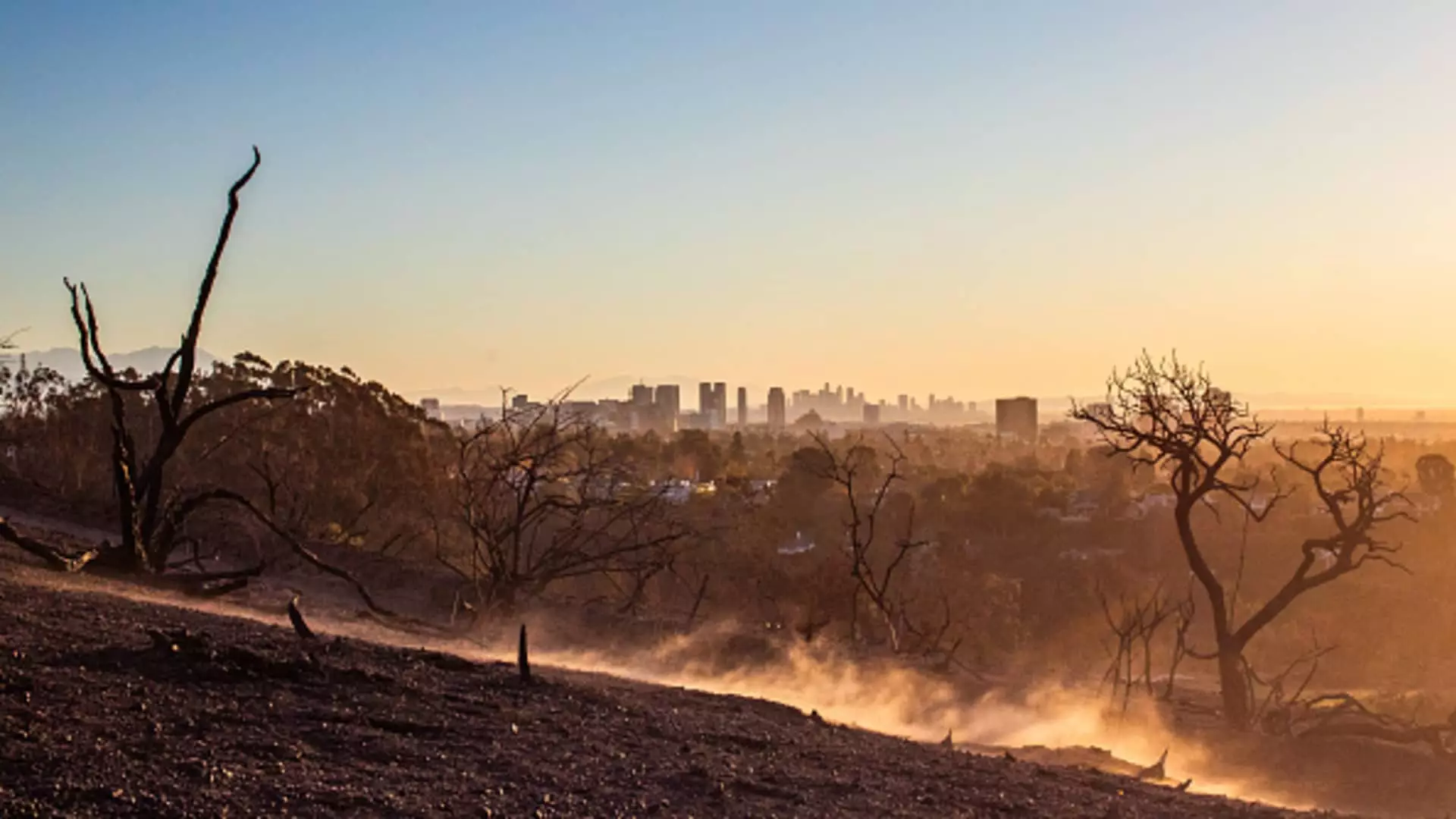The insurance landscape in the United States has undergone dramatic shifts over the last several years, exacerbated by climate change and the increasing prevalence of natural disasters. Although premiums were already climbing prior to recent devastating wildfires in California, the severity of these events is projected to drive costs even higher. Analysts from major financial institutions, including JPMorgan and Wells Fargo, have predicted that the damages from the recent Los Angeles wildfires could surpass the staggering figure of $20 billion, potentially marking it as the most expensive wildfire in U.S. history.
As these costly natural events unfold, homeowners are left to navigate an insurance market that becomes increasingly challenging and costly. The frequency and intensity of wildfires, floods, and storms are not just random occurrences; they signal a paradigm shift that is reshaping how insurers assess risk and determine premiums.
For homeowners in California, the effects of climate-induced disasters have resulted in a torrent of rising insurance costs. According to industry experts, the recent shifts in regulations implemented by California’s Department of Insurance may soon pave the way for rate increases in areas susceptible to wildfires. These adjustments can seemingly overshadow the concern for homeowners who face the dual threat of heightened premiums and a diminishing insurance pool. The Insurance Information Institute has highlighted that filing even a single wildfire claim can lead to a staggering 29% increase in premiums, whereas two claims can push rates up by as much as 60%.
Such trends bring to light an alarming sense of urgency surrounding affordability. As Patrick Douville from Morningstar has noted, many homeowners may find themselves unable to afford policies, or worse—unable to secure any coverage at all. This phenomenon raises critical questions about the sustainability and accessibility of homeowners insurance in disaster-prone regions.
While California often epitomizes the struggle with rising premiums, it is essential to recognize that the ramifications extend far beyond its borders. Homeowners in various states are beginning to ask if their insurance costs will also rise in response to California’s turmoil. Interestingly, Janet Ruiz from the Insurance Information Institute reassures that premiums in one state are generally insulated from catastrophic events in another. Each state operates under its respective regulatory frameworks, crafted to protect consumers from overreaching premium hikes based solely on out-of-state disasters.
However, the interconnectedness of insurance companies operating across multiple states complicates this reassurance. Results from recent studies suggest that when strict regulations prevent companies from adjusting rates in certain states, insurers may offset their losses by raising rates elsewhere. The disconnect between actual risk and insurance pricing is indicative of a regulatory system that may need reevaluation, especially as climate-related catastrophes become more frequent.
The sentiment is palpable even in states like Vermont, where intermediaries like Michael Barrett at Barrett Insurance Agency note an uptick in clients concerned about premium hikes. Despite Vermont’s comparatively relaxed regulation, extreme weather events such as flooding have begun to worry homeowners there as well. The signs indicate that no region is invulnerable to the economic pressures stemming from climate change and escalating insurance premiums.
A broader review of the last year’s significant natural disasters, which racked up $1 billion each in damages, underscores a national shift. Nearly half of all U.S. homes are now at risk of severe damage from weather-related threats, creating widespread vulnerability. Consequently, home insurance rates have surged by a staggering 33.8% from 2018 to 2023, with an additional 11.3% rise occurring just last year.
Given this evolving landscape, homeowners must reassess their coverage and the costs associated with rebuilding. The expenses of repairs and reconstruction have skyrocketed since the pandemic. Insurers suggest that homeowners regularly review their coverage limits to align with current replacement costs. According to industry insights, the cost of simply rebuilding a home has more than doubled in some regions, now reaching upwards of $300 per square foot.
Underinsurance emerges as a pressing concern; many homeowners unwittingly choose policies that fail to provide adequate coverage for their properties. Inadequate flood coverage is one example, where traditional homeowners insurance does not extend to such environmental risks. It is vital for homeowners to proactively seek updated evaluations regarding reconstruction costs and necessary coverage adjustments.
As chaotic weather patterns continue to wreak havoc, the implications for homeowners insurance are profound and multifaceted. The rising cost of premiums not only affects individual finances, but it also poses questions about the stability of the insurance industry as a whole. Awareness of these trends and active engagement in reassessing insurance needs are essential for homeowners who want to protect their properties effectively amid an uncertain future. The time to act is now—climate change is not a distant threat but a present reality.


Leave a Reply